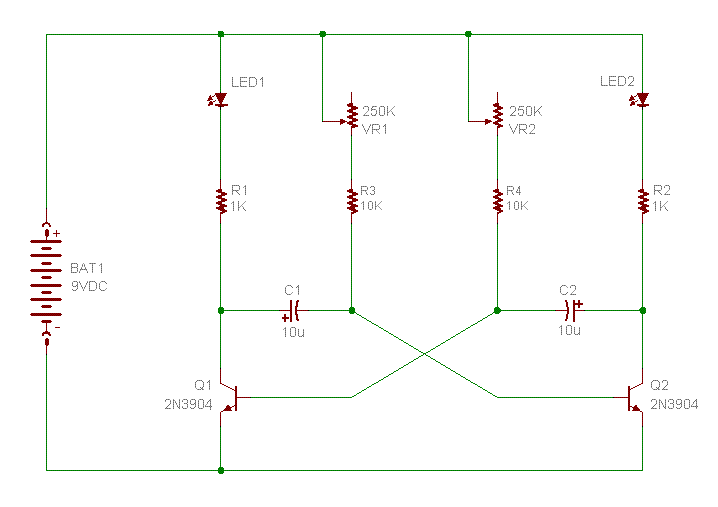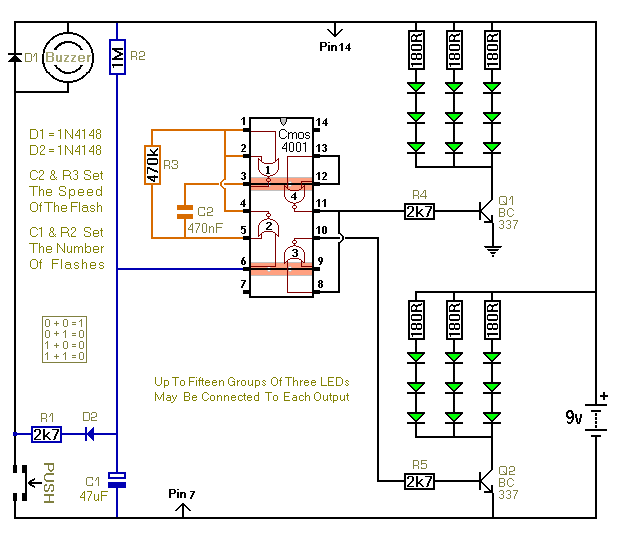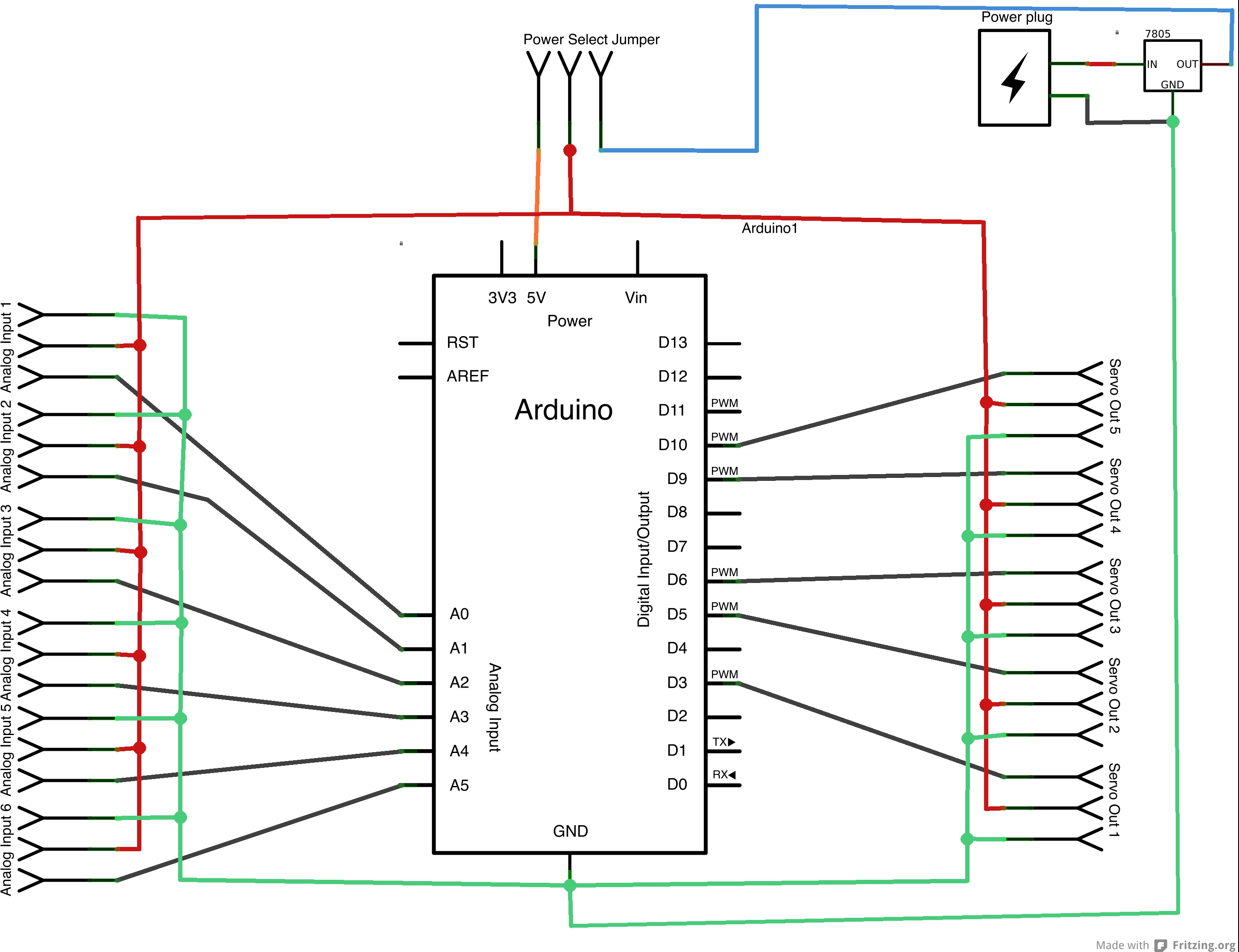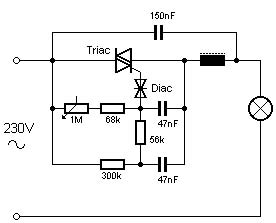
flashing leds kit

This kit includes fully illustrated instructions and a circuit schematic. Components are adequately spaced for easy assembly and value identification on the board. The circuit board features silk-screened outlines for component placement, and the circuit pads on the solder side of the board are large and well-spaced for easy soldering. The component mounting holes are plated through, facilitating good solder connections and significantly reducing the risk of board damage if a component placement correction is needed. Two variable resistors (potentiometers) allow for independent adjustment of the flash timing of each LED. Rotating the potentiometers counter-clockwise results in slower LED flashing, while rotating them clockwise increases the flash speed.
This kit is designed for ease of assembly and user-friendly operation, making it suitable for both beginners and experienced electronics enthusiasts. The layout of the circuit board is optimized to minimize assembly errors, with clear markings and ample space between components. The silk-screened outlines not only aid in component placement but also contribute to a visually organized board, enhancing troubleshooting and maintenance.
The inclusion of plated-through holes for the component mounting ensures a robust connection, which is particularly beneficial in applications where the board may be subjected to mechanical stress or thermal cycling. The design choice to use large, well-spaced circuit pads further simplifies the soldering process, allowing for better heat dissipation during soldering and reducing the likelihood of cold solder joints.
The adjustable flash timing feature, controlled by the two potentiometers, provides flexibility in the operation of the LEDs. This allows users to customize the visual effects according to their preferences or project requirements. The ability to slow down or speed up the flashing of the LEDs enhances the versatility of the circuit, making it applicable in various contexts, such as decorative lighting, indicators, or educational projects demonstrating basic electronic principles.
Overall, this kit offers a comprehensive learning experience, combining practical assembly skills with the fundamentals of circuit design and LED operation.This kit includes a completely illustrated instructions and circuit schematic. Components are adequately spaced for easy assembly and value identification on the board. The circuit board has silk screened outlines for component p lacement and circuit pads on the solder side of the board are large and well spaced for easy soldering. Even the component mounting holes are plated through, making it easier to solder good connections and greatly reducing the odds of causing board damage in the event that a component placement correction might be required.
Two variable resistors (pots) allow independent adjustment of the flash timing of each LED. Rotate the pots counter-clockwise for slower LED flashing, or clockwise to flash the LED`s faster. 🔗 External reference
This kit is designed for ease of assembly and user-friendly operation, making it suitable for both beginners and experienced electronics enthusiasts. The layout of the circuit board is optimized to minimize assembly errors, with clear markings and ample space between components. The silk-screened outlines not only aid in component placement but also contribute to a visually organized board, enhancing troubleshooting and maintenance.
The inclusion of plated-through holes for the component mounting ensures a robust connection, which is particularly beneficial in applications where the board may be subjected to mechanical stress or thermal cycling. The design choice to use large, well-spaced circuit pads further simplifies the soldering process, allowing for better heat dissipation during soldering and reducing the likelihood of cold solder joints.
The adjustable flash timing feature, controlled by the two potentiometers, provides flexibility in the operation of the LEDs. This allows users to customize the visual effects according to their preferences or project requirements. The ability to slow down or speed up the flashing of the LEDs enhances the versatility of the circuit, making it applicable in various contexts, such as decorative lighting, indicators, or educational projects demonstrating basic electronic principles.
Overall, this kit offers a comprehensive learning experience, combining practical assembly skills with the fundamentals of circuit design and LED operation.This kit includes a completely illustrated instructions and circuit schematic. Components are adequately spaced for easy assembly and value identification on the board. The circuit board has silk screened outlines for component p lacement and circuit pads on the solder side of the board are large and well spaced for easy soldering. Even the component mounting holes are plated through, making it easier to solder good connections and greatly reducing the odds of causing board damage in the event that a component placement correction might be required.
Two variable resistors (pots) allow independent adjustment of the flash timing of each LED. Rotate the pots counter-clockwise for slower LED flashing, or clockwise to flash the LED`s faster. 🔗 External reference





